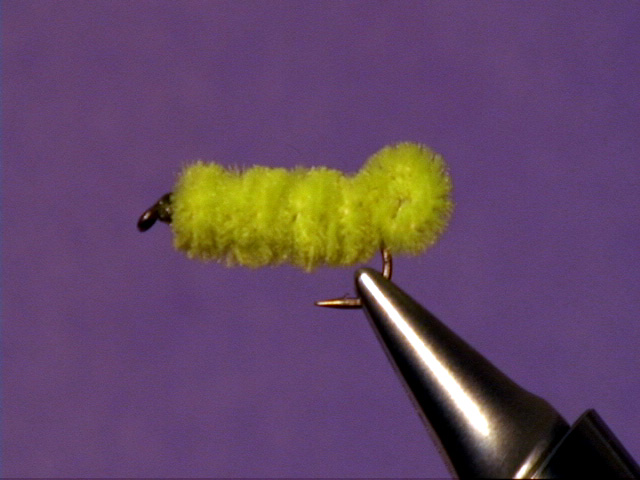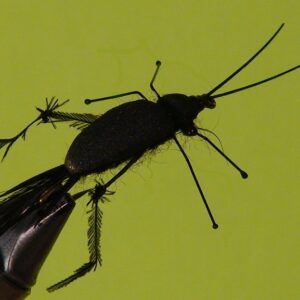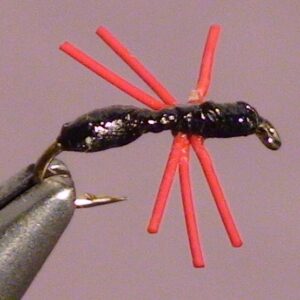Hook Size 12/14/16
The Green Weenie Fly is a popular inchworm imitation. Inchworms are also called the
spanworm, looper, sour worm and measuring worm. It’s actually the larva stage of life for
the moth. There are numerous species of inchworms. The Green Weenie is a good
trout, panfish and bass fly.
Inchworms are a yellowish/green color. Most of them are green. At times the worm like
larvae will suspend several inches from limbs on a silk thread they produce. They do this
hanging act when they are ready to pupate. It is common for them to fall into the water. In
fact, if they are suspended over the water, they are going to fall into the water.
A good time to try the Green Weenie Trout fly would be when you spot a few of them
hanging from tree limbs, especially during those times when a major hatch is not
underway, which is ninety percent of the time. If you have not seen any of them on the
banks it very unlikely there will be any in the water. That doesn’t mean you can’t catch
fish on the fly. You probably can even if there are no inch worms simply because the fly
also closely resembles other food such as Rock Worms (free living caddis larvae) and
some of the net-spinning caddis larvae.
The different species of inchworms pupate at different times of the year. You will find
them throughout the summer but heavy only at certain times. Once the trout have seen
them, it doesn’t seem to matter if they are lots of them or not.
As with most terrestrials, in the larger streams you should fish the Green Weenie fly
near the banks concentrating on those with overhanging limbs of trees and bushes.
Most of the small stream have tree limbs that about cover the entire width of the stream.
The fly can be fished with or without any added weight A very good method is to use a
large fly such as a hopper as an indicator and fish the inchworm larvae imitation below it
at a depth depending upon the depth of the water you are fishing. Not only is the large
fly a good strike indicator, it may also get some action from the trout.
Of course you can also use a strike indicator. We almost always fish the fly without an
indicator or a large dry fly tandem rig. You can detect the strike simply by watching your
line and leader. That is our preferred way of fishing the fly.




